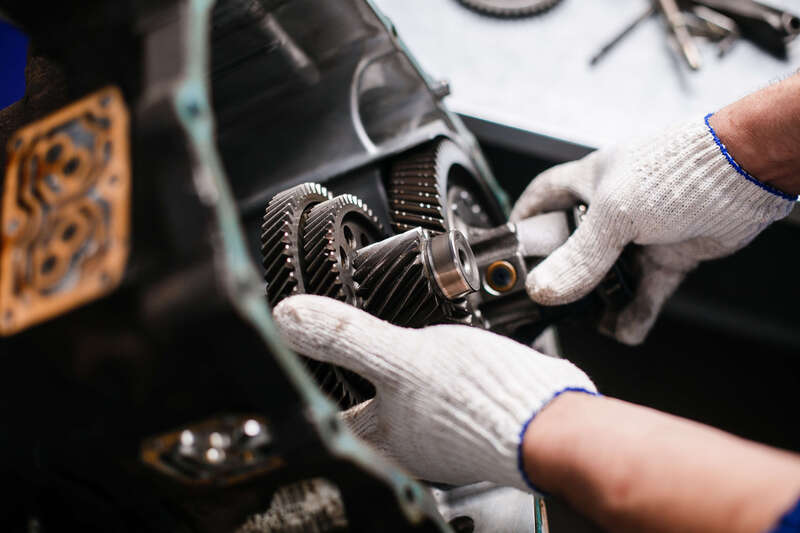basic designation, which normally consists of three,
four or five figures or a combination of letters and
figures. The figures shown on page 5 indicate the
basic desig nation system for the most common
types of rolling bearings.
These figures identify the following in the
order stated:
• The first figure in the basic desig nation or,
alternatively, the first letter or combination of
letters, denotes the bearing type. The bearing
types identified by these designations can be
seen from the diagram on page 6 and in the
accom panying text.
• The second and third figures denote the
Dimension series (according to ISO); the first
identifies the width or height ratio (B or T for
width and H for height) and the other the
Diameter series (D).
• The two final figures in the basic designation,
when multiplied by five, identify the bore
diameter d in mm, with the following exceptions.
For bearings with a bore diameter less than 10
mm or equal to or greater than 500 mm, the bore
diameter is given uncoded in mm and is separated
from the rest of the basic designation by an oblique
stroke, e.g. 618 / 8 (d = 8 mm) or 511 / 530 (d =
530mm). The same system also applies to bearings
of the ISO dimension series with a bore diameter
of 22, 28, or 32 mm, e.g. 322 / 28 (d = 28 mm).
Bearings with a bore diameter of 10, 12, 15 or 17
mm are identified as follows:
00 = 10 mm
01 = 12 mm
02 = 15 mm
03 = 17 mm
In the case of certain deep groove ball bearings,
self aligning ball bearings and angular contact ball
bearings with a bore diameter of less than 10 mm,
the bore diameter is also given uncoded in mm, but
directly after the first two figures, e.g. 629 or 129
(d = 9 mm).
A non-standard bore diameter is always expressed
in mm to a maximum of three decimal places. This
bore diameter identification belongs to the basic
designation and is sep arated from the normal
basic desig nation by an oblique stroke, e.g. 6202 /
15.875 (d = 15.875 mm instead of the normal 15
mm).
Supplementary designations
The supplementary designations are placed either
in front of the basic designation (prefix) or after the
basic designation (suffix). Prefixes serve to identify
bearing components. Suffixes are used to identify
designs (variants) that differ in some way from the
original design or that differ from the design that is
the current pro duction standard.
Prefixes
A prefix designates either a bearing component
(generally with the same basic designation as
that of the complete bearing), taper roller bearing
cones and cups corresponding to ABMA standard
specifications, or special bearings.
In some cases, a set of “prefix” letters represents
part of the standard desig nation (rather than a
prefix depicting a special bearing). The most obvious
example of these are the cylindrical roller bearings
(NU 320 ECM).
Other examples are needle bearings, CARB,
housings, accessories, etc.
Suffixes
A suffix identifies a variant, i.e. a deviation from the
standard design or from the original design. These
suffixes are grouped according to an established
system and are added to the basic designation in
a specified order in cases where more than one
deviation applies. Where two or more suffixes
normally preceded by an oblique stroke are
combined, then the oblique stroke will generally
appear only before the first suffix. In the following
cases, however, the suffixes are separated by
oblique strokes:
a) Where two suffixes follow one another, the
first ending with a figure and the second
tarting with a figure, e.g. 6310 / C4 / 630251;
b) Where a clearance range is followed by a suffix
for type of grease and where the meaning would
otherwise be ambiguous, e.g. 6205 - 2Z / C2L /
HT51 (= C2L + HT51; low range C2 clearance +
HT51 grease) but 6205 - 2Z / C2LHT51 (= C2 +
LHT51; C2 clearance + LHT51 grease).
Complete product designations (basic designation
plus any other supple mentary designations)
are always marked on the package, whereas
the designation on the actual product may be
incomplete for practical reasons (i.e. small bearings
with very lengthy designations






